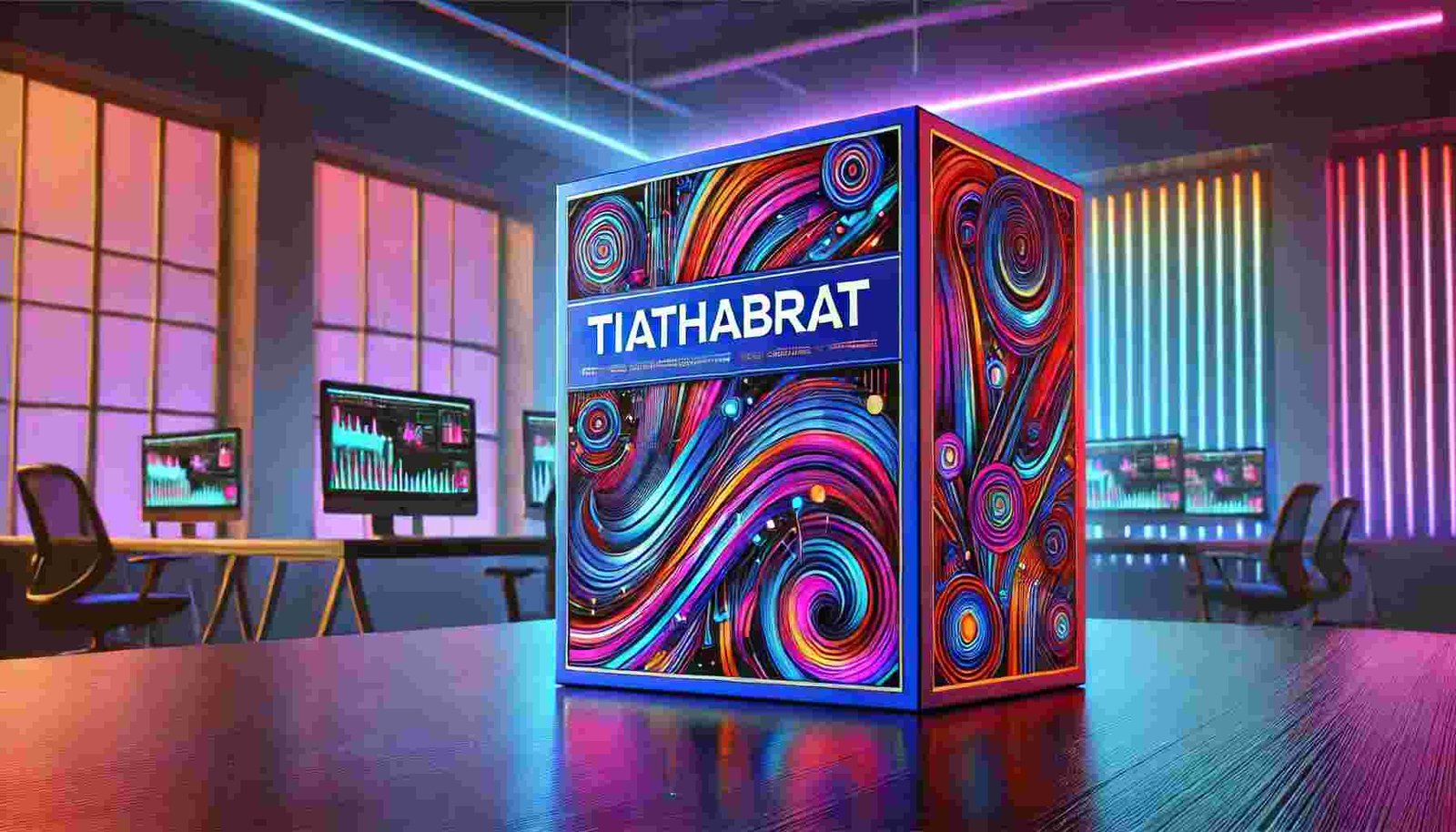Introduction: What is Tiathabrat?
Tiathabrat is a fascinating tradition steeped in history, rituals, and cultural significance. Though its roots are ancient, the practice continues to thrive in modern times, reflecting a profound connection between spirituality and communal heritage.
This article delves deep into Tiathabrat’s origins, beliefs, and practices, highlighting its relevance in today’s world.
The Origins of Tiathabrat
Tiathabrat’s origins date back centuries, with historical records suggesting that it emerged as a ceremonial practice in [specific region or culture, if known]. The word itself is symbolic, often associated with [cultural/religious symbolism]. The tradition grew, deeply embedded in people’s lives, shaping their rituals, customs, and communal celebrations.
Core Beliefs of Tiathabrat
At the heart of Tiathabrat lies a belief system grounded in the balance between nature, the divine, and humanity. Some of the core tenets include:
- Connection to Nature: Tiathabrat emphasizes living in harmony with nature, with rituals that celebrate seasonal cycles and natural elements.
- Spiritual Devotion: Followers of Tiathabrat practice regular devotion to [deities or spiritual figures], often through prayer, meditation, or ceremonial offerings.
- Community and Heritage: The tradition places great value on community, with many practices involving collective participation to honor ancestors and preserve cultural identity.
Key Practices of Tiathabrat
Tiathabrat is known for its elaborate rituals, each laden with symbolism and meaning. Some of the most notable practices include:
Ritual Offerings
Offerings to deities or spiritual forces play a significant role in Tiathabrat. These offerings may include food, flowers, or sacred objects and are believed to bring blessings, good fortune, or protection.
Seasonal Festivals
Seasonal festivals form the backbone of Tiathabrat, marking essential times of the year such as harvests, solstices, and equinoxes. These festivals often involve community gatherings, feasts, music, and dances, all performed to honor the changing seasons and their impact on life.
Sacred Dance and Music
Dance and music are integral to Tiathabrat ceremonies, where rhythmic movements and chants invoke spiritual energy. The dances often tell stories of gods, ancestors, or nature’s elements, blending artistic expression with religious devotion.
Pilgrimage
Many Tiathabrat followers undertake pilgrimages to sacred sites believed to hold spiritual power. These journeys are acts of devotion meant to renew one’s faith, seek blessings, or gain deeper insight into life’s mysteries.
Meditation and Prayer
Regular meditation and prayer are fundamental practices within Tiathabrat, used to connect individuals with higher spiritual forces. Specific mantras or prayers, passed down through generations, often accompany these practices.
Symbolism in Tiathabrat Rituals
Tiathabrat is rich in symbolic acts, each ritual having layers of meaning. Some key symbols include:
- The Circle: Often used in dances or ceremonial arrangements, the circle represents eternity, unity, and the cyclical nature of life.
- Fire and Water: Fire symbolizes transformation, while water represents purification, and both elements are frequently used in rituals to balance energy.
- Sacred Trees or Plants: Certain trees or plants are revered as sacred in Tiathabrat and are believed to hold protective or healing properties.
The Role of Tiathabrat in Modern Times
While rooted in ancient customs, Tiathabrat continues to resonate with people today. It is not only practiced by those in the original cultural context but has gained interest among spiritual seekers worldwide. Its focus on nature, community, and spirituality speaks to the contemporary yearning for deeper connection and meaning in a fast-paced world.
How Tiathabrat is Preserved Today?

In an age where many traditions are at risk of being lost, efforts to preserve Tiathabrat have been notable. Cultural organizations and community groups work diligently to keep the practice alive, organizing festivals, teaching younger generations, and documenting rituals and oral histories. Additionally, the rise of digital platforms has allowed Tiathabrat practitioners to share their customs with a global audience, further ensuring the tradition’s survival.
Common Misconceptions About Tiathabrat
Despite its long history, Tiathabrat is sometimes misunderstood or misrepresented. Common misconceptions include:
- Tiathabrat as a ‘Dead’ Tradition: Contrary to popular belief, Tiathabrat is still actively practiced and has evolved to suit modern contexts.
- A Closed Practice: Tiathabrat originates in a specific culture but is not always open to outsiders. Many practitioners welcome respectful participation from those genuinely interested in learning.
- Superstitious or Backward: Some dismiss Tiathabrat as mere superstition, failing to recognize the deep philosophical and spiritual dimensions it embodies.
Benefits of Practicing Tiathabrat
Many followers of Tiathabrat find personal and communal benefits through their practice, such as:
- Spiritual Growth: Emphasizing meditation, prayer, and connection to higher forces fosters personal spiritual development.
- Cultural Continuity: Practicing Tiathabrat helps keep cultural heritage alive, allowing traditions to be passed down through generations.
- Community Bonding: The collective nature of Tiathabrat festivals and rituals strengthens community ties, creating a shared sense of purpose and belonging.
Frequently Asked Questions (FAQs)
1. Is Tiathabrat still practiced today?
Yes, Tiathabrat continues to be practiced in various forms. While it may have evolved, its core principles and rituals remain intact.
2. What are the main rituals in Tiathabrat?
Essential rituals include seasonal festivals, sacred dances, offerings, and pilgrimages to holy sites, all infused with spiritual symbolism.
3. Can anyone participate in Tiathabrat ceremonies?
While Tiathabrat is traditionally linked to specific cultures, many practitioners are open to outsiders who approach the tradition with respect and genuine interest.
4. What is the meaning behind Tiathabrat’s rituals?
Tiathabrat rituals often reflect the balance of nature, the divine, and human existence, with symbols like fire, water, and circles representing core spiritual truths.
5. How has Tiathabrat adapted to modern times?
Tiathabrat has adapted by maintaining its relevance through community efforts, cultural education, and even digital sharing, allowing it to thrive in modern contexts.
6. What is the spiritual significance of Tiathabrat?
Spiritually, Tiathabrat is about deepening one’s connection to nature, honoring ancestral wisdom, and cultivating a harmonious relationship with the divine.
Conclusion
Tiathabrat is more than just a set of rituals; it is a way of life that bridges the ancient and the modern, the spiritual and the communal. Its practices, steeped in symbolism and cultural heritage, inspire and connect people.
As we look to the future, Tiathabrat’s preservation and revival speak to a broader desire to hold onto traditions that offer meaning and purpose in an ever-changing world.
Latest Post!
- The Ultimate Guide to Luxurious and Eco-Friendly Bath Products: Featuring Cunke
- Bailey Self Storage: The Secure and Convenient Storage Solution You Need
- PR Construction, LLC: Building Dream Homes with Exceptional Craftsmanship
- A Detailed Look at Lang’s Painting: Unveiling the Artistry Behind the Masterpieces
- Moving Made Easy with AMPOL Moving, Inc.: Your Trusted Illinois Partner
- WepBound: A Groundbreaking Platform Revolutionizing Digital Connectivity






